Tejomaya Das: A Diamond From the Rough
By Madhava Smullen for ISKCON New Vrindaban Communications
Tejomaya & Manonath in the Bahulaban gardens – New Vrindaban 1974
Tejomaya Das grew up in some of New York City’s roughest neighborhoods in the Bronx and Upper Manhattan. For him and his best friend, Manonatha Das, leaving them to forge a different life for themselves seemed unlikely.
But when the hippie movement came along in the sixties and seventies with its messages of peace, love, and consciousness expansion, their fate changed.
Tejomaya and Manonatha made friends in the hippie scene, got into rock ‘n’ roll, and heard the Hare Krishna mantra chanted on George Harrison’s My Sweet Lord. After they had already become vegetarians, they met New Vrindaban’s own Dharmakala Dasi at New York’s Port Authority and received prasadam lugloos from her that blew their minds.
Then, in the winter of 1973, while they were living in the woods outside of New Paltz, Upstate New York pursuing a natural lifestyle, they came across a piece about New Vrindaban in Mother Earth magazine written by Howard Wheeler (Hayagriva Das). Inspired by the description and mission of the community, they immediately decided they had to check it out.
In a moment that seemed perfectly arranged by Krishna, as they walked up the driveway into Bahulaban, they were welcomed by Advaitacharya Das, who was wearing a Grateful Dead t-shirt with his shaved head, and also came from New York City. The three hit it off immediately, and the newcomers knew they were home.
Home was an extremely austere place, however. As they were single men, Tejomaya and Manonatha lived at the brahmachari ashram on the original Vrindaban farm, sleeping on the floor with twenty or thirty other men in one big room. The bathhouse was a 100-year-old stone-walled basement with a barrel of freezing water that you dipped a cut-off milk carton into to pour over your head in the morning.
“The funniest thing I remember was that Tejo would get up early and see to the fire in the bathhouse, but would be the last to bathe,” says Manonatha. “15 to 30 guys would come and go, and there was Tejo, looking very apprehensively at the pickle barrel of ice cold water until the last minute. Then he would throw it over his head, scream and curse…and get ready for morning services.”
Already natural living enthusiasts, Tejomaya and Manonatha were set to work with Madhava Gosh in the greenhouse and garden. At the time, New Vrindaban devotees were extremely focused on growing produce, with a dream to become self-sufficient, and there was a 100-foot greenhouse and a large garden at Bahulaban.
“In the Spring of 1974, we first had to learn to forage for pokeweed,” recalls Manonatha. “We used to make pokeweed subji. Then we started to cultivate and plant the garden. We had lots of fresh fertilizer from the cow barn, and grew bumper crops that summer! We would be out in the sun all day in just a dhoti and rubber boots. Tejo and I would get really burnt, and get blisters on our necks and heads.”
Tejomaya, (to the far left), and Advaitacarya (far right) among the devotees who greeted Srila Prabhupada at Bahulaban during his 1974 visit to New Vrindaban
In October 1974, both Tejomaya and Manonatha were initiated by Srila Prabhupada. Earlier that summer, they had been asked to help build Prabhupada’s Palace. So, after all day in the garden, they would mix and carry cement to the Palace at night.
Tejomaya following Srila Prabhupada while touring his Palace in New Vrindaban 1976
Soon after, Tejo was transferred full-time to the Palace crew. Like many of the young devotees at the time, he learned a bit of everything on the job, developing skills in all areas of construction, electrical and especially plumbing. He was crucial to the building of Srila Prabhupada’s Palace, and was present in July 1974 when Prabhupada said of the palace workers, “These devotees are my jewels.” He can also be seen in a well-known photo of Srila Prabhupada touring his Palace in 1976.
Like the others, Tejo earned Prabhupada’s praise, soldiering on through all the austerity the job had to offer. “He would walk the three miles to and from work every day, through every season, even in the dead of winter,” says Advaitacharya Das. “Once, he spent days digging an indoor pond by hand in what is now the main Palace temple room. The day after he finished, the plan changed, and he was told to fill it back in!”
Nevertheless Tejomaya wrote about his experience working on the Palace with warmth and enthusiasm in a 1975 Brijabasi Spirit article, describing how exciting it was to see the Palace’s lotus arches, marble columns and walkway coming up nicely.
He also appreciated the mood of service and devotee association: “On an average day Atmabhu dasa is putting up forms, Tejomaya dasa is working with a jack hammer, Rsi Kumara is cutting rebar, Nityodita dasa is wiring rebar together, and Bhakta Jorge is helping Tejomaya,” he wrote. “And our daily Bhagavad-gita sloka is being vibrated in the atmosphere.”
Alongside his construction work, Tejomaya would also fill in for cooks when needed, enduring the notorious New Vrindaban cooking “pits.” He learned how to cook the legendary rice and oat water breakfast from Sudhanu, and then in turn taught the recipe to Sankirtan, who went on to cook it for fifteen years.
“Tejo made Ekadasi bearable with his fantastic breakfast tapioca,” says Advaita. “And he was well-known for his Gauranga potatoes, bharats, and palak paneer. Like the other pit cooks, he’d be cooking outdoors with nothing but a tin roof overhead in the dead of winter, starting fires from scratch with frozen wood at 3 o’clock in the morning, and dragging forty-gallon soot-covered pots to the pot room to scrub them in cold water. It was tougher than you can imagine!”
In late 1979, Tejomaya moved back to New York City. He got and then gave up a high-paying job with excellent benefits as a plumber with the City of New York, because, he said, the work was too easy. He then started his own business and worked steadily as a plumber for many years in New York.
Tejomaya & Kelly December 2016
During his time in the city, Tejo met his wife-to-be Kelly, who had grown up in Queens with several New Vrindaban devotees, including Madri and her brother Kholavecha. Kelly was already familiar with Krishna consciousness, having visited the temple in New York with her friends, and she and Tejomaya soon developed a connection. On one of their first dates, Tejo took Kelly to visit New Vrindaban.
The couple began holding Sunday Feasts in their small apartment in New York. Later, they moved into a building that New Vrindaban devotees had purchased in Greenpoint, Brooklyn. Tejo renovated the basement, and the group started a small temple there, holding programs and often accommodating New Vrindaban fundraisers who were traveling up and down the East Coast. Tejo took care of maintenance in the building, while Kelly was famous for her curd subjis and bharats in tomato sauce.
In the early 1990s, Tejomaya moved back to New Vrindaban with Kelly. Attending nursing school, Kelly became a nurse at Wheeling Hospital. She has served there for decades, and is known and respected by all the nurses in town.
She’s appreciated by New Vrindaban devotees for being generous, helpful, and having a great sense of humor. “She’d do anything for you,” says Advaita. “She’s always helped my family with anything we’ve needed – she’s such a good person.”
Kelly and Tejo also raised two sons, Gopala and Haridas, and have one grandson, Gopala’s son Brendan. Both grown up sons received training from their father, and went into similar fields as him – Gopala works with Tejo in New Vrindaban, while Haridas works for the City of New York water department.
Tejomaya is always working hard to improve New Vrindaban
Tejomaya himself, meanwhile, served as an assistant to Jaya Murari, another stalwart maintenance man and master plumber, upon moving back to New Vrindaban in the ‘90s. He worked hard to develop and maintain New Vrindaban’s infrastructure, which he continues to do to this day.
“Tejomaya is the backbone of New Vrindaban’s infrastructure,” says Advaita. “Technically he oversees the water plant and does all the plumbing. But he can also be seen installing the bathrooms in the guesthouse, insulating gas tanks, redoing hallways in the temple… whatever needs to be done.”
Tejomaya is known as one of the most dependable and hardest workers in the history of New Vrindaban, on call at all times of day and night, and willing to do the tough jobs others aren’t.
He’s been described simultaneously as a wild man, ornery and boisterous, and a humble man with a heart of gold who would “give you the shirt off his back,” according to Advaita.
While working, he’s often heard calling out, “Please help me Krishna,” and expressing his deep appreciation for the devotees, and for the opportunity to help build New Vrindaban.
“I’ve known few devotees as grateful to be here, through thick and thin, as Tejomaya,” says Advaita. “He’s so grateful for Srila Prabhupada, Sri Sri Radha Vrindaban Chandra, the devotees, and the mercy of living in the dhama.”
Kelly Carter: Alice in Krishnaland
By Madhava Smullen for ISKCON New Vrindaban Communications
Kelly Carter, a science and social studies teacher at a middle school in Moundsville, never “joined” ISKCON. But she’s been a part of New Vrindaban longer than many devotees. Set to be honored at this spring’s Service Appreciation Ceremony, she has both love and a unique objectivity for the community that can teach us a lot and help guide us into the next fifty years of New Vrindaban.
Kelly moved to McCreary’s Ridge with her family when she was one year old in 1968, the year New Vrindaban was founded under Srila Prabhupada’s vision.
Interestingly, “New Vrindaban” is not one piece of land but many different plots on and around the Ridge, interspersed with land owned by local West Virginians. So whether they wanted it or not, devotees and locals were, and still are, part of the same broad community.

Kelly’s photo, taken from her front yard with a clear view of the Vrindaban farmhouse – circa, late 1970s.
“For me, the Hare Krishnas were just always there,” says Kelly. “My house was on a hill straight across from the original Vrindaban farm, so I could see their place from my yard.”
As devotees bought more property in the neighborhood, and people began to talk about the strange new people who had moved in, Kelly would see them walking down the road in their robes and shaved heads.
“The earliest interaction with a devotee that I can remember was probably when I was six or seven, and a lady came to ask if she could pick the flowers in our field,” Kelly says. “The devotees would gather flowers such as Queen Anne’s Lace to eat. They’d fry them in ghee, they said.”
As a small child, Kelly remembers being fascinated with the devotees and the large work horses they had. But she was upset with them too – with their rigidity and how they didn’t always act in a way she considered ‘normal’ and friendly.
“I would wave at them and be friendly with them, but they wouldn’t say ‘Hi’ back to me,” she recalls. “They would only say ‘Haribol,’ and I didn’t know what that meant. It really annoyed me. So finally I stopped one devotee walking with his big horses and said, “I told you hi. Why can’t you just say hi?’ Then he did. But he quickly added something like ‘Haribol’ again.”
In 1974, when Kelly was about seven years old, Srila Prabhupada visited New Vrindaban. Kelly’s interaction with him, while brief, made a big impression on her – his mood seemed different than that of some of his young disciples.
“I saw the devotees carrying him by, with lots of chanting and dancing,” she says. “I watched everyone go by, and then I waved to Prabhupada. He waved back, and smiled. I could tell that he was just thinking, ‘Aw, look at that sweet little girl waving to me, I’m going to wave back.’ And I remember thinking that he was much more friendly than some of the Hare Krishna people that lived there.”
Soon after, however, Kelly did meet many friendly devotees, and developed good relationships with them. At 8 or 9, the first devotee she ever really talked to, Vrindapati Das, took her to meet his wife and new baby boy.
With her parents divorced, her brothers at an age where they were “too old to play with her,” and few friends her age, Kelly began to take walks down to the nearby Prabhupada’s Palace, then under construction. In a different era, when children would spend all day outside, nobody really noticed.
“I felt like I was Alice in Wonderland,” she says. “I would walk down the road and into my own little world – the Hare Krishna community – that nobody knew about. I’d meet people from all over the world, and watch them build a Palace of Gold.”
As a young teenager, Kelly became a familiar face in New Vrindaban. She befriended and helped Narendra Das in the Palace’s stained glass workshop. She helped Jala-kolahali Das lay gold leaf on the Palace walls. And when she stopped by the ladies making garlands, they were happy to teach her.
“I was really appreciative of the devotees who were willing to take the time to teach me things and let me participate,” she says. “One of my fondest memories was, I got to know the devotee who worked in the Deity kitchen. He would make all these special things for the Deities, and after they were offered he’d let me try them. I was not a very adventurous eater as a child – I was a macaroni and cheese kind of girl – so this was all way out of my league! I remember my favorite was puris and tomato chutney.”
Later, Kelly also had various jobs in New Vrindaban, washing dishes and helping in the Palace gardens.
“Pretty much all the devotees were from a major city, and they would teach me about where they were from,” she says. “I learned about the world, and about a different culture. Back then, there wasn’t so much diversity here, and not many people traveled. So I gained a lot of skills that I wouldn’t have otherwise had the opportunity to gain. Now I travel a lot, and meet people from all walks of life. New Vrindaban taught me how to do that.”
Not everyone at the time liked or understood the devotees, who bought a lot of property in the area, including the local bar, which had been the social center of the neighborhood. Many saw them as extra weird hippies, nicknamed them “hairy critters,” and were prejudiced against them because of how different they were.
According to Kelly, devotees, however, were prejudiced against the local people too, pegging them as backward and devoid of culture. As Kelly grew up she received negative treatment as well: devotees variously tried to pressure her into joining, feared her “bad influence,” judged her harshly, and called her names like “Karmi Kelly.”
“I was raised a Catholic, and I thought that the locals weren’t treating the devotees in a Christian way,” says Kelly. “On the flipside, I would listen to the devotees teach about Krishna, and then see that they weren’t treating the local people in a Krishna conscious way.”
In the mid 1980s, Kelly moved to town, and didn’t keep in touch with devotees in New Vrindaban as much. More recently, she has begun to visit and be more involved. And she has seen positive changes in both the devotees and the locals.
The locals, she feels, are more open-minded, due to traveling more as well as the increasing popularity of Hare Krishna principles such as vegetarianism.
The devotees, she’s noticed, are more humble and wise. They’re also assimilating more into the broader community – devotees are out and about in town; coaching ball teams; and joining local gardening groups.
They’ve also invited Kelly to join the recently established New Vrindaban Village Association, and she has been happy to attend meetings.
“It sounds like they are much more open to embracing all aspects of the community, including the local people,” she says. “And I really appreciate that. I always wanted to see more unification, more appreciation for each other. Things could have been different if there had been more of that in the old days. Because the people who live here were good farmers – the devotees could have learned a lot from them. People could have helped each other more.”
But it isn’t too late, Kelly says. “I would like to see everybody – the broader local community, and the New Vrindaban community – becoming more and more accepting of and helpful to each other. And that has a better chance of happening now than it ever has. I think the time is ripe for some healing!”
It’s clear that Kelly wants to see New Vrindaban do well, and that it means a lot to her.
“I feel very lucky to have lived in a spiritual place like New Vrindaban,” she says. “I grew up there, built so many relationships, and I really feel like I’m part of the community – a community that helped shape my life.”
Devotees Invited to Refresh and Renew at Reimagined Festival of Inspiration

By Madhava Smullen for ISKCON New Vrindaban Communications
One of the first of the retreat-style festivals currently so popular in ISKCON, Festival of Inspiration, launched in New Vrindaban in 2000, has always offered something a little unique.
Now, in its 17th year, with the tagline “Rethink. Refresh. Renew,” FOI is again taking a fresh approach, offering an exciting new inspirational experience based on feedback from devotees about what they like.
“Whereas previous Festival of Inspirations were a high-speed puzzle of eighteen different short presentations you could choose from, we now plan to offer people an immersive experience that they can dive into and experience together,” says ISKCON New Vrindaban temple president Jaya Krsna Das. “We also want to provide them with practical tips they can implement in their day-to-day lives.”
So in this year’s FOI, running from May 12th to 14th, devotees will get to choose the seminar that interests them most out of three in-depth offerings, each lasting ten hours over three days.
In “Dig In!” members of ECO-Vrindaban, New Vrindaban’s simple-living branch, will guide attendees on an interactive journey from Lord Krishna’s garden and goshala to His plate. Devotees will learn how to grow, cook, and preserve food. They’ll take a tour of ECO-Vrindaban’s gardens, study seasonal foods and how to cook them; learn strategies for building soil, increasing plant fertility, and weed control; and construct a simple compost pile.
In the milking barn, they’ll get to brush and milk the cows, make yogurt, and churn butter. They’ll also get a practical lesson in how to make ghee the original, medicinal way.
“Dig In! will be an experience unique to New Vrindaban, but will also give you knowledge you’ll be able to take home and actually utilize, for instance in creating an urban garden for yourself or your temple,” says Jaya Krsna.
For those more interested in personal development, there’s “The Inner View” with Srila Prabhupada disciple Urmila Devi Dasi, which will take an honest look at real life challenges in parenting, marriage and more from a Krishna conscious perspective. Urmila will also explore questions like, “Always thinking of Krishna? Is it possible amidst the realities of my life?” “How can all the aspects of my life energize me spiritually?” And “Can there be quality sadhana, worship, and quality time with Krishna in a distracted life filled with so much to do?”
With hands-on small group work like journaling and discussion, the seminar aims to see participants leave with solutions and strategies for their individual situations.
Finally, for those who are eager to dive into the scriptures, there’s “The Ten Subject Matters of Srimad-Bhagavatam” with Bhakti Charu Swami. In this seminar, Maharaja will explore the ten principal topics of the Bhagavatam, which cover all aspects of knowledge important to human beings. He’ll also look at how these topics are not dealt with one after another in the great work but can be found throughout all twelve cantos.
Besides the in-depth seminars, there will be five plenary sessions that will not be held alongside anything else, so that all festivalgoers will get to participate in them together.
Legendary kirtaniya Agnideva Das will discuss the mood and inner meaning of Srila Prabhupada’s Prayers to the Lotus Feet of Lord Krishna, written aboard the Jaladuta. Along with all the devotees, Agnideva will also sing the bhajan, which is the title track on his new album.
In “Preaching in Everyday Life, Our Real Business” inspirational book distributor Vaisesika Das will talk about how the sankirtana movement was Sri Chaitanya Mahaprabhu and Srila Prabhupada’s entire focus, and how important it is that we continue to carry it out. He’ll also share practical advice about how to distribute books and how we can all find space to preach in our busy regular lives.
In “Mahabharata & Our Life’s Journey: A Storytelling Workshop,” award-winning storyteller Sankirtana Das will talk about the importance of oral tradition in society, explore the heroes of the Mahabharata and and discuss how we can all find the inner hero within us.
As New Vrindaban is the only temple in North America with a full-size Lord Nrsimhadeva Deity, devotees will rush to Bhaktimarga Swami’s plenary, where they’ll get the rare chance to experience a dramatic recitation of the Nrsimha Kavacha along with a Nrsimha yajna, in front of the ferocious Lord Himself.
Last but certainly not least, one of Srila Prabhupada’s seniormost disciples, Malati Devi Dasi, will lead a sanga in which dozens of Prabhupada disciples will share their heartfelt memories of ISKCON’s Founder-Acharya, and how he inspired them.
For every hour that their parents are attending these uplifting and edifying seminars, children aged 5 to 13 will also get a complete program, included free with festival registration. Led by teachers Sri Tulasi-Manjari and Olivia Browning Snider, this hands-on-learning adventure will be the first ever FOI Kids’ Camp with a New Vrindaban farm life theme. Activities will include art, cooking, gardening, building, games, sports and, of course, caring for the cows.
Missing off the schedule for the past few years, Festival of Inspiration’s famous entertainment will be back too. The family friendly show, which will accommodate and involve children, will feature energetic dance troups, musical performances by Mangalananda (Michael Cassidy) and Yamini, The Juggernauts with Gaura Vani and Visvambhar, and Kirtan Premi; the drama Puri by Bhaktimarga Swami; and storytelling by Sankirtan.
Throughout the whole festival, there will also be regular kirtan under the yajnashala, and more time for devotees to simply hang out, chat, and enjoy each other’s association.
And of course, there will be three meals a day of Festival of Inspiration’s famously delicious prasadam. Embracing the simple lifestyle Srila Prabhupada’s envisioned for New Vrindaban, only dairy from New Vrindaban’s own protected cows will be used, and locally-grown produce will be used as much as possible. There will also be lots of vegan options.
“We’d like devotees to feel like New Vrindaban is their home away from home, a farm retreat from their city temples,” says Jaya Krsna. “And we hope they’ll leave Festival of Inspiration feeling completely refreshed and renewed.”
REGISTRATION
Website: http://www.festivalofinspiration.net/
Facebook: https://www.facebook.com/nvfestivalofinspiration/
Phone: 304 843 1600 Extension 111
Email: Palacelodge108@gmail.com
Cost: $200 per person
This includes accommodation for 3 nights(Thursday through Saturday), 9 sumptuous prasadam meals, kirtans, plenaries, and seminars and free parking! Kids age 5 or under can attend free of charge provided they share a bed with a parent. New adVentures Camp is free for all children, however pre-registration is mandatory.
Barn Ready, Rock Steady: Ananda Vidya and Lalita Gopi
By Madhava Smullen for ISKCON New Vrindaban Communications
As residents and aficionados of ISKCON history know well, New Vrindaban winters are not exactly forgiving. And with the austerity, guests decrease, some residents go traveling, and the hustle and bustle of the summer season quietens down.
Still, the show must go on, and core crews continue on through the frigid, icy months to make sure it does.
As far as caring for New Vrindaban’s milking cows, it’s husband and wife cowherds Ananda Vidya Das and Lalita Gopi Dasi who hold down the barn. And they do so with a quiet, good-natured dedication that reveals a deep love for their service – a love that was born early on.
“When I joined ISKCON in 1990, I went to live in the Columbus women’s ashram with Malati Devi,” says Lalita Gopi. “We would visit New Vrindaban, and the first time I stopped by the cow barn, I went back home to Columbus and just cried. I said, ‘I wanna live in New Vrindaban!’ I just had this inexplicable attraction to being with the cows and the land.”
Lalita Gopi moved to New Vrindaban in 1993, where she learned how to milk a cow from Nityodita Das and got further training in cow care from ISCOWP director Balabhadra Das. From the mid 1990s, she would help on and off at the milking barn, bringing her daughters Visakha Gopi and Vrindavani with her for milkings when they were babies.
Ananda Vidya, meanwhile, joined ISKCON at New Vrindaban in 1995, but spent a lot of time away, traveling in a van as a brahmachari and book distributor for over fifteen years.
In 2013, he finally settled in New Vrindaban and began helping at the milking barn, where he and Lalita Gopi began to associate and bond over their love of the simple Brijabasi life. They were married soon after. “I really liked his Bhagavatam classes – he would tell great Krishna stories!” Lalita Gopi laughs.
That same year, Ananda Vidya began serving with ECO-Vrindaban, caring for the cows at the milking barn full-time. His wife assists him alongside taking care of her daughters, offering mangala arati at the temple and helping ISKCON New Vrindaban with landscaping.
Every day, Ananda Vidya rises, chants most of his japa at home, then makes his way down to the barn to start milking the cows at 7:00am. Between two milkings, cleaning the barn of dung, making sure the cows are fed and watered, and churning butter, his day is full, usually ending at 8pm.
Out of New Vrindaban’s fifty cows, oxen and bulls, Ananda Vidya and Lalita Gopi care for nine milking cows. They know them all by name. Laksmi, Surabhi, Yamuna, Asha, Parvati, and Usha are currently being milked, while Malati, Sita and Manjari are all pregnant. The couple also care for the calves until they’re weaned at four to six months with Vamsika, Jaya Radhe, Subhadra, and little bull Madhu currently under their wing.
Milking the cows takes an hour and a half. Ananda Vidya and Lalita Gopi try to milk as many as they can by hand. As they milk, they play Srila Prabhupada lectures, Chaitanya Charitamrita recordings by New Vrindaban’s own Damodara Das, or the morning program over the radio.
The cows yield around twenty gallons of milk in the winter and thirty in the summer. Some of this is turned into paneer, some Ananda Vidya makes into yogurt, and some he churns into about 15 to 20 pounds of butter a week. This keeps the Deity kitchen supplied with butter and ghee, and helps supplement the devotee kitchen’s needs too.
As well as all this, in the summertime the couple teaches guests – sometimes as many as one hundred visit the goshala at once – how to milk and interact with the cows, while a priest from the temple offers “go-puja.”
Ananda Vidya and Lalita Gopi’s service is often not easy. In the wintertime temperatures regularly drop below freezing. The couple have to break the ice in the water trough so that the cows can drink. They struggle to clean the barn when the cow dung is frozen to the floor and the shovel. And they’ve had to wear heavy layers of clothes and gloves, still shivering because the freezing wind blows right through cracks in the doors and walls.
Recent developments, fortunately, have made winters more manageable. Former ECO-V project manager Mukunda Das installed foam insulation in the barn, filled up all the cracks, added a layer of paneling on the walls, and put in new insulated doors; while Mother Jayasri’s son Vasudeva Gosh donated a powerful heater, turning the barn into a warm shelter.
“We’re so grateful; now we don’t have to brace ourselves when we go out to the barn anymore,” says Ananda Vidya. “It’s been so much nicer this winter.”
He and his wife do still have to be regulated and steady, performing their service day in and day out whatever happens. “It’s a bit like Deity worship,” says Ananda Vidya. “You have to be there at a specific time, twice a day, no matter what. Whatever struggles there are in your mind, you just have to surrender.”
But Krishna’s cows make any hardships surmountable.
“They’re the most loving animals,” Lalita Gopi says. “They just give. And they take care of each other – they’re so affectionate. The calves actually play games – I’ve seen them play tag, and run races, all starting in a line and belting across the field like little kids! I can understand why Krishna loves His cows so much.”
“Most people don’t get a chance to interact with cows on a regular basis – but they’re missing out, because there’s a really natural relationship between humans and cows,” adds Ananda Vidya. “They just calm you down if you’re stressed out. Being around them takes the edge off of life. And what’s more, they’re emblems of the mode of goodness – getting a chance to serve them directly has given me a lot of realizations about Vrindavan and Lord Krishna.”
He grins. “We invite you to visit us and the cows and experience it all for yourself!”
ECO-Vrindaban Board Meeting Minutes 02/26/2017
ECO-Vrindaban Board Meeting Minutes 02/26/2017
Mission Statement: ECO-Vrindaban promotes simple living, cow protection, engaging oxen, local agriculture, and above all, loving Krishna, as envisioned by Srila Prabhupada, the Founder-Acharya of ISKCON New Vrindaban.
Participating Directors: Chaitanya Mangala, Kripamaya, Ranaka, Sri Tulasi Manjari (Chair) & Vraja.
Participating Advisors: Jaya Krsna
Participating Managers: Ranaka & Nitaicandra
Recording Secretary: Kripamaya
1. 2017 Farm Conference
The ISKCON North American Farm Conference will take place in New Vrindaban Oct. 13-15, 2017. Sri Tulasi Manjari has been meeting with the Farm Conference Planning Committee on an ongoing basis.
2. Ranaka’s Monthly Report
- Bhagavan, Gintaras and Jai Nitai completed most of the electrical upgrade project at the Temple Barn. This project included putting L.E.D. floodlights in front of the barn.
- Six cows are currently being milked at the Temple Barn. The cows are delivering approx. twenty gallons of milk a day. Three heifers also reside at the Temple Barn.
- Ray has been working at Gopal’s Garden school to expand the classroom facilities.
- Ray also repaired the GMC truck at the Temple Barn and with Ranaka’s help repaired one of the old tractors.
- The new tractor for the Nandagram farm arrived. This tractor is more environmentally friendly than many of the older models.
- Ray moved manure from the Temple Barn to the Community Garden area.
- One of our cows, Dantari, was transported to the O.S.U. veterinarian hospital and had a cancerous tumor removed from her brain. She can now see more clearly.
- ECO-V’s new mailing address is 164 Surabhi Lane, Wheeling WV 26003.
3. Nitaicandra’s Monthly Report
- Chaitanya Bhagavat repaired posts for the new ox paddock and bull pen that will be constructed soon at Nandagram. As weather permits Chaitanya Bhagavat has also been training the oxen.
- Suchandra has been working in the flower gardens. She has been mostly focusing on putting up fencing for pest control.
- Nitaicandra has been working with Anuradha to put together hands-on work stations and presentations for the Festival of Inspiration. Such presentations will include compost & soil building, planting, preserving and identifying wild herbs.
- Nitaicandra is helping to develop a gardening outreach program with local schools in collaboration with Lalita Gopi.
4. Reallocation of Village Association Funding
WHEREAS: The Village Association reports it no longer needs funding for a liaison part time salary, previously approved by ECO-V in June 2016, because Lakshmi Honest agreed to serve as the Village Association liaison on a volunteer basis.
RESOLVED: The ECO-V Board authorizes broadening the use of these funds for additional purposes, including paying legal the costs required to start a new non-profit association and covering costs of monthly gatherings.
5. Monthly Joint Board Meetings
The Joint Board meetings now include the Village Council. So far there have been two meetings, which have primarily focused on sorting out ways in which the Village Council and the Board members will interact in an ongoing basis.
6. Herd Share Program Update
The West Virginia Alliance for Raw Milk met with West Virginia State legislators and found out that Herd Share programs can now legally operate in West Virginia. The next step is for ECO-V’s management team and INV to put together a Herd Share agreement (with the help of a lawyer) and file that agreement with the West Virginia Department of Agriculture.
7. Internal Funding Request: Additional $500 for Spring 2017 Shirts
WHEREAS: The ECO-V Board wishes to acknowledge the dedication of long time community members, as well as offer a token of appreciation to the INV and ECO-V staff and volunteers.
RESOLVED: The Board approves up to an additional $500 as a budget for plaques and t-shirts to distribute during the March 2017 meeting weekend.
Open Invitation to the 6th Service Appreciation Ceremony in New Vrindaban
You are cordially invited to a service appreciation ceremony.
Honorees: Kelly J. Howard Carter, Tejomaya & Kelly, Advaita & Madri.
When: Sunday March 26th, 2017
Time: 3:30 PM, immediately following the Sunday Feast
Where: Community Hall, under the Palace Lodge
Please come and celebrate their many years of friendship & service in the development of New Vrindaban.
ECO-Vrindaban Board Meeting Minutes 01/29/2017
ECO-Vrindaban Board Meeting Minutes 01/29/2017
Mission Statement: ECO-Vrindaban promotes simple living, cow protection, engaging oxen, local agriculture, and above all, loving Krishna, as envisioned by Srila Prabhupada, the Founder-Acharya of ISKCON New Vrindaban.
Participating Directors: Anuttama, Chaitanya Mangala, Kripamaya, Ranaka, Sri Tulasi Manjari (Chair) and Vraja.
Participating Advisors: Bhima, Devala and Jaya Krsna
Participating Managers: Nitaicandra
Recording Secretary: Jamuna Jivani
1. Bahulaban Barn Community Center Proposal Update
Based on conversations with the health department, concerns over fire code, & considering the main use of the building is to serve cows, etc., the ECO-V Board decided the second floor of the Bahulaban Barn is not an appropriate space for a proposed community center.
2. Finalized 2016 Operating Budget
WHEREAS: The ECO-V Board wishes to review ECO-V’s income and expenses for the previous year.
RESOLVED: The Board approves a finalized operating budget of $323K for 2016.
3. 2017 Operating Budget Approval
WHEREAS: The ECO-V Board wishes to set projections of ECO-V’s income and expenses for the upcoming year.
RESOLVED: The Board approves an operating budget of $350K for 2017.
4. Ranaka’s Monthly Report
- A new calf was born at the Temple Barn
- The cows are producing 20 gallons per day, which is being used as milk, ghee and butter
- Three cows are expecting this year
- Ray finished what he can do on the electrical work at the Temple Barn. Now Bhagavan will finish the job.
- Ranaka completed the end-of-the-year payroll and the auditor came to review
- He spent time researching a new tractor
- The new ECO-V address will be finalized soon
- He has been advertising hay for sale
- To stay out of the cold weather, Ray has been working on the school and at the ghee plant
5. Nitaicandra’s Monthly Report
- At Nandagram, Caitanya Bhagavat has been regularly working with the oxen and he is training and caring for young Madhu.
6. 2017 Farm Conference Update
Sri Tulasi participated in a meeting where the event organizers discussed the topics for presentation, made a list of farms (both ISKCON and otherwise), and decided the theme to be “Back to the Basics.” Madhava Smullen wrote an article about the conference that will be posted on ISKCON News and other sites on the internet.
7. New Tractor Funding Request
WHEREAS: The ECO-V Board wishes to invest in equipment to support its ongoing farming-related projects.
RESOLVED: The ECO-V Board approves up to $55K for the purchase of a new tractor for use at the Nandagram Farm.
8. Gopal’s Garden School Funding Request
WHEREAS: The ECO-V Board wishes to support the educational needs of the youth in New Vrindaban.
RESOLVED: The ECO-V Board approves up to $10K for building renovations to the school building.
9. Joint Board Meeting Review
The ECO-V Board recapped the new tri-group meeting. The Directors who participated agreed the first meeting was overall positive and also allowed room for improvement as the month’s progress.
10. ISKCON Ministry of Cow Protection and Agriculture Funding Request
WHEREAS: The ECO-V Board wishes to support cow protection and local agriculture efforts throughout ISKCON.
RESOLVED: The ECO-V Board approves up to $5K towards the expenses of the ISKCON Minister of Cow Protection and Agriculture with the following stipulations:
- When appropriate, it should be made known that ECO-V is a sponsor
- The Minister should ask the locations he is visiting to help with travel expenses
- The Minister should provide ECO-V with an end-of-year report on how the grant was used.
11. New Vrindaban Folklorist Funding Request: $17.5K
WHEREAS: The ECO-V Board wishes to support the documentation of New Vrindaban’s history.
RESOLVED: The ECO-V Board allocates up to $17.5K for the New Vrindaban Oral History and Folklorist Project with the following stipulations:
- The interview questions be reviewed by an expert
- A professional archivist be consulted
- A professional videographer be consulted
Spring 2017 Open Invitation: March 24, 25 & 26, 2017
OPEN INVITATION: The board members of ISKCON New Vrindaban, ECO-Vrindaban & the Village Council invite all New Vrindaban residents, neighbors and well-wishers to participate in the upcoming weekend activities.
MARCH 24th, 25th & 26th WEEKEND ACTIVITY SCHEDULE:
Friday, March 24th
7:30 pm to 8:30 pm: Dinner Prasad with members of the Village Council, INV & ECO-V Boards & GBCs (at Radha Vrindaban Chandra’s Temple)
Saturday, March 25th
9:00 am to 10:00 am: Breakfast Prasad (at Radha Vrindaban Chandra’s Temple)
9:45 am to 1:30 pm: INV, ECO-V & Gopal’s Garden Presentations (under Lodge)
1:30 pm to 2:30 pm: Lunch Prasad (at Radha Vrindaban Chandra’s Temple)
3:30 pm to 6:00 pm: Community Dialog (under Lodge. Tentatively two topics: 1. A Foundation for the New Vrindaban Village Association: Rights and Responsibilities; 2. Rover Pipeline Discussion; possibly additional topics, TBD.)
7:30 pm to 8:30 pm: Dinner Prasad with members of the Village Council, INV & ECO-V Boards & GBCs (at Radha Vrindaban Chandra’s Temple)
Sunday, March 26th
9:00 am to 10:00 am: Breakfast Prasad (at Radha Vrindaban Chandra’s Temple)
11:00 am to 1:00 pm: Parikrama Tour (Tentative stops: Madhuban, Vrindaban, Yoga Shala, & possibly additional locations, TBD. Weather permitting.)
1:00 pm to 3:00 pm: Sunday Program & Feast (at RVC’s Temple)
3:30 pm to 6:30 pm: Service Appreciations (under the Lodge. Honorees: Kelly Carter Howard, Tejo & Kelly, & Advaita & Madri)
ECO-Vrindaban Board Meeting Minutes 01-22-2017
ECO-Vrindaban Board Meeting Minutes 01-22-2017
Mission Statement: ECO-Vrindaban promotes simple living, cow protection, engaging oxen, local agriculture, and above all, loving Krishna, as envisioned by Srila Prabhupada, the Founder-Acharya of ISKCON New Vrindaban.
Participating Directors: Anuttama, Bhima (Chair), Chaitanya Mangala, Kripamaya, Ranaka and Sri Tulasi Manjari.
Recording secretary: Jamuna Jivani
1. Directorship Renewal
Chaitanya Mangala was re-elected to a three-year term as a Board Member.
2. Directorship Renewal
After serving an initial one year term, Sri Tulasi Manjari was re-elected to a three-year term as a Board Member.
3. New Director
After serving one year as a Board Advisor, Vraja Johnson was elected to an initial one-year term as a Board Member.
4. Bhima’s Retirement as Director and Chair & Selection as Advisor
WHEREAS: The ECO-V Board wishes to simultaneously honor Bhima’s three years of volunteer service to ECO-Vrindaban and to keep him involved in a consultative capacity.
RESOLVED: The Board accepts Bhima’s retirement as a Board Member and Chairperson and selects Bhima as Advisor for a one-year term.
5. Sri Tulasi Manjari as Board Chair
WHEREAS: The ECO-V Board wishes to fill the vacant position of Chairperson.
RESOLVED: The Board designates Sri Tulasi Manjari as the ECO-V Chairperson for one year, ending after the January 2018 annual meeting.
6. Radha-Krishna’s Retirement as Board Advisor
The Directors expressed their thanks for Radha-Krishna’s service as an Advisor and will send her a letter of appreciation.
7. Jaya Krsna to Continue as Advisor
WHEREAS: The ECO-V Board wishes to maintain a team of advisors.
RESOLVED: The Board renews Jaya Krsna’s role as Advisor for a one-year term.
8. Devala as a New Advisor
WHEREAS: The ECO-V Board wishes to maintain a team of advisors.
RESOLVED: The Board invites Devala as an Advisor for a one-year term.
9. Annual Renewal of Officer Roles
WHEREAS: The ECO-V Board wishes to fill the officer roles for 2017.
RESOLVED: The Board designates Kripamaya as the ECO-V President for one year, ending after the January 2018 annual meeting.
ALSO RESOLVED: The Board designates Ranaka as the ECO-V Secretary and Treasurer for one year, ending after the January 2018 annual meeting.
Pujari Sanga Inspires North American Priests
Pujaris from all over North America gathered in New Vrindaban, West Virginia in January to gain inspiration, support and training from two events organized by the ISKCON Deity Worship Ministry: the inaugural North American Head Pujari Sanga, followed by the third annual Weekend Pujari Training.
First off, twenty-one head pujaris and deity department managers from seventeen temples gathered for the Head Pujari Sanga, from January 3rd to 5th.
Proceedings began with attendees taking the time to get to know each other, brainstorming and discussing what they wanted to achieve during a one-hour orientation, as a major goal of the sanga was for pujaris to develop lasting relationships amongst each other.
The group then had a forty-five-minute teleconference with Global ISKCON Deity Worship Minister Nrsimha Kavacha Das, who elaborated on the various roles and responsibilities of a head pujari.
This was followed by the pujaris identifying some of the universal challenges they shared in their service, and how to overcome them.
“For instance, at the top of the list is the shortage of pujari teams to cover the worship in many temples,” says North American Deity Worship Minister Jayananda Das, who led the Sanga. “Many head pujaris find themselves having to pick up a lot of additional service. So we discussed how, when devotees come forward to get involved in their temples, we can have a proactive focus on getting them engaged in their deity departments.”
The head pujaris also shared best practices. Assistant head pujari from ISKCON Los Angeles Vaninatha Raya Das, for example, explained how whenever an offering or arati is late, it is recorded and posted on the wall, so that the issue can later be addressed to improve punctuality.
North American Deity Worship Minister Jayananda Das speaks to the head pujaris
Meanwhile second-generation pujari Sri Caitanya Hari Das from Vancover shared how his department handles the common problem of deity jewelry being haphazardly put away and left in a disorganized state. Instead of leaving the task to the evening pujari, who is already exhausted from a long day, they set it aside for someone else to come in and properly organize it the next morning. Many representatives from other temples expressed their eagerness to try this system too.
The next day, Braja Bihari Das of ISKCON Resolve led a three-hour workshop entitled “Getting to the Heart of Conflict and Communications for Head Pujaris.” Among the many interpersonal challenges for pujaris discussed were those between younger and older generations, who came into the service with vastly different moods and training.
“A better understanding of conflict resolution helps these challenges,” says Jayananda. “For example, a central point was that we make so many assumptions about others that are often incorrect. But if head pujaris ask open-ended questions, and try to come to an understanding of what someone’s interests are, rather than just opposing their position, then we can often come to a collaborative solution. It’s important to get beyond the ‘I win, you lose’ mentality to a ‘win-win’ approach.”
Later that afternoon, Malati Devi, who played a key role in the beginning of deity worship in ISKCON and is still hugely supportive of deity worship in North America, led a team-building exercise. Called “Bundle of Sticks,” it showed how pujaris working together in cooperation are much stronger than they are going at it alone. Malati also shared some of Srila Prabhupada’s instructions on deity worship.
Finally, there was a brainstorming session about what head pujaris needed to be more successful in their service, and how the North American GBC and Deity Worship Ministry could support and assist them.
On the last day of the sanga, Jayananda facilitated more sharing of best practices, and discussed some of the Deity Worship Ministry’s current efforts and future goals. These included the Ministry recently taking up management of a deity dressmaking shop in Mayapur that aims to make deity outfit creation an internal operation.
“Currently ISKCON Temples worldwide pay literally millions annually to outside businesses for their deity dresses,” says Jayananda. “We would like to scale the shop’s operations up so that it can handle demand, allowing us to be able to keep it inside the ISKCON family.”
The shop will be headed up by Ananda Lila Dasi, who considers deity dressmaking a personal passion and has been serving and teaching at the Mayapur Academy for many years. Profits will go towards supporting ISKCON Deity Worship Ministry’s training efforts around the world as well as new school buildings in Mayapur.

Graduates from the Pujari Training Seminar
Concluding the Head Pujari Sanga, everyone discussed how best to stay connected, and Jayananda resolved to develop an internal website featuring informational documents and relevant Srila Prabhupada quotes. He also plans to set up a Google Group so that head pujaris across North America can post questions and continue to share best practices.
Afterwards, head pujaris who attended were effusive in their feedback. “As a second generation devotee, who now finds myself in a managerial role within our community of Vancouver, Canada – this was one of the most enlivening and engaging experiences I’ve had since coming on board,” said Sri Caitanya Hari Das.
“I feel completely recharged, inspired, and determined to do better,” said Indulekha Dasi from ISKCON Boston.
ISKCON Miami head pujari Dharma Das – the seniormost head pujari in North America, having consistently served the Miami deities for well over forty years – said, “I sometimes become a little overwhelmed with so much service at our temple. Being at this meeting helped me realize that the problems that we experience at ISKCON Miami are also experienced almost everywhere.”
And Prana-Hari Das of ISKCON Denver said, “This sanga unified head pujaris across North America so that we can work together to fulfill Srila Prabhupada’s desires concerning Deity worship in ISKCON.”
After the Head Pujari Sanga, thirty-three devotees attended the third annual Weekend Pujari Training from Friday January 6th through Sunday the 8th. They came from all over the country and ranged from young new bhaktas and bhaktins to senior pujaris – some head pujaris stayed to brush up on their skills.
The most thorough deity worship training offered in North America today, the three-day program included nearly twenty hours of training. The first half covered the foundational and theoretical aspects of deity worship – why we do it, what are its benefits, qualifications required, and the position of the spiritual master.
The second half was practical, with demonstrations on how to perform acamana, wake the deities and put them to rest, offer bhoga and arati, and perform festival abhisekhas. The grand finale consisted of a demonstration of an elaborate sixteen-item puja to Sri Sri Gaura Nitai.
Jayananda hopes to offer the Weekend Pujari Training again in April or May 2018, once again at New Vrindaban, which he finds to be an ideal location. “ISKCON New Vrindaban offers perhaps the best facilities for accommodating multiple guests of any temple in North America, and they are very supportive and accommodating,” he says.
For Jayananda, providing all this training and support for pujaris is essential. “Deity worship is a core activity of our vaidhi sadhana bhakti,” he says. “And we see how Srila Prabhupada put so much effort into establishing temples and deities all around the world. So it’s of utmost importance that we do our best to serve the Lord favorably and to the best of our abilities. And systematic training goes a long way to that end!”
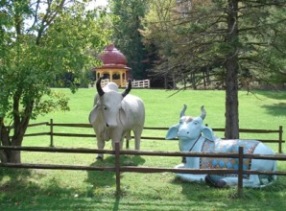
Welcome to Brijabasi Spirit
Thank you for taking the time to visit the New Vrindaban community blog. Think of visiting our blog as making a virtual pilgrimage.
Hare Krishna Hare KrishnaKrishna Krishna Hare Hare
Hare Rama Hare Rama
Rama Rama Hare Hare
"May cows stay in front of me; may cows stay behind me; may cows stay on both sides of me. May I always reside in the midst of cows."
Hari Bhakti-vilas 16.252






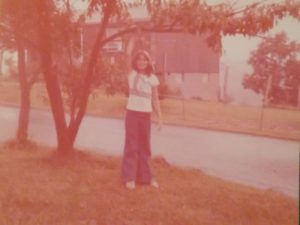
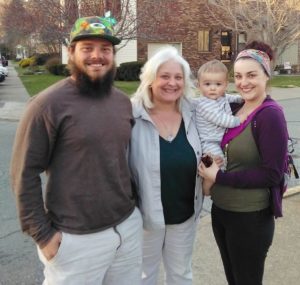

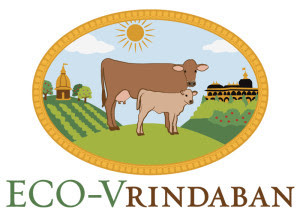
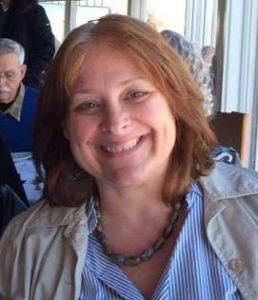

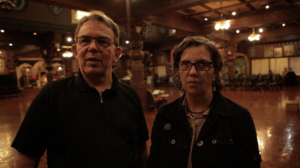
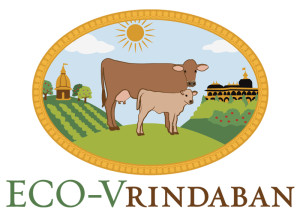








Recent Comments